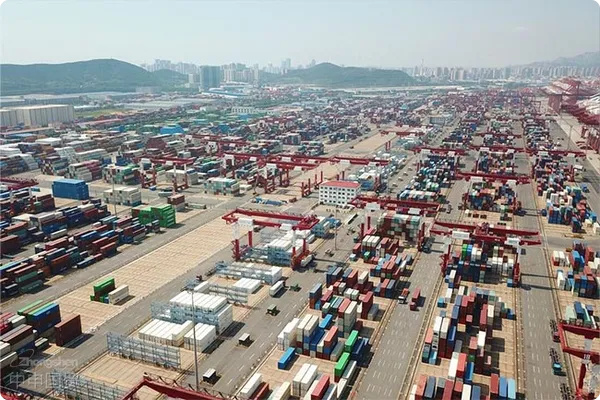- Shanghai Zhongshen International Trade Co., Ltd. - Two decades of trade agency expertise.
- Service Hotline: 139 1787 2118

Contents
ToggleMaritime TransportationThe Pitfalls of Qualification Review in Agency Services
The latest data from 2025 shows a 23% year-on-year increase in cases of customs clearance delays caused by carrier qualification issues for imported equipment. Professional agencies will focus on verifying three core qualifications:
- Maritime Transport Operation Filing Certificate: Verify the validity period of the Ministry of Transport filing number
- Special Equipment Transportation Permit: Special qualifications must be verified for ultra-high and over-limit equipment.
- Port agent network: Request to provide a sample of customs clearance records from overseas partners.
Key Points in the Design of Precision Equipment Transportation Solutions
A certain medicalEquipment ImportsIn the case study, the professionally designed transportation plan saved 28% in shipping costs:
- Selection of Shipping Methods
- Full container load (FCL) transportation: Equipment exceeding 15 cubic meters per piece is recommended to be shipped in a full container.
- LCL (Less than Container Load): Small-sized equipment is loaded using special frame containers.
- Earthquake-resistant packaging requirements
- G-value sensitive equipment requires an air suspension system.
- The marine environment simulation test report is indispensable.
Three Common Misconceptions in Customs Declaration
Customs audit data for 2025 reveals that the error rate in declarations for equipment-related goods reached as high as 41%:
- Incorrect use of commodity code: Semiconductor equipment is often misclassified under Chapter 85 instead of Chapter 84.
- It is recommended to verify through the following methods:Certificate defects: The ASEAN Certificate requires attention to the direct shipment rule supporting documents.
- Failure to declare a franchise license:3CCertified equipment requires prior application for exemption certification.
The Golden Rules for Choosing Marine Insurance
Compare the differences in key insurance clauses for 2025:
- Free from Particular Average (FPA): Only cover total loss and general average.
- With Particular Average (WPA): Additional coverage for particular average, with a premium rate increase of 0.15%.
- All Risks: Includes risks during loading and unloading processes, and recommends insuring high-value equipment.
Standardized response procedures for emergencies
Professional agency-established four-tier response mechanism:
- Level 1 response: In the event of major incidents such as containers falling into the sea, an emergency response team will be activated within 2 hours.
- Level 2 response: Customs inspection exception, complete the supplementary documentation within 4 hours.
- Level 3 response: Shipment delay, provide an alternative solution within 6 hours.
Key Evaluation Criteria for Selecting an Agency
According to the 2025 industry research data, high-quality agents should possess:
- Customs clearance time guarantee: The average customs clearance time does not exceed 3 working days.
- Degree of cost transparency: Provide a detailed cost breakdown list
- Emergency case handling: Request to review the archives of major accident handling in the past three years.
Related Recommendations
? 2025. All Rights Reserved. Shanghai ICP No. 2023007705-2  PSB Record: Shanghai No.31011502009912
PSB Record: Shanghai No.31011502009912










